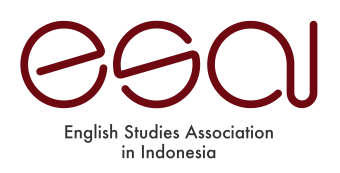Authors must strictly follow the submission guidelines of the journal. To submissions that do not adhere to the guidelines provided, they will be REJECTED.
Every submission to Journal of English Language & Culture (JELC) will go through plagiarism checking in the initial process of paper screening and before publishing it in an issue. The editorial team will use Turnitin to check for plagiarism. If the similarity index is over 30 percent, the paper will automatically be REJECTED. If the similarity index is below 30 percent, the paper will be reviewed by the editorial board before finally being reviewed through a blind review process by the reviewers based on the criteria set by JELC.
Article Structure in General
All articles must be written in English, should have an abstract in English and Indonesian between 200 to 300 words in length, followed by four to six keywords related to your article.
Submissions should be between 4000-6000 words (excluding abstract and references) in A4 size paper with margins as the following: top 2.54 cm, bottom 2.22 cm, right 2.54 cm and left 2.54 cm.
Title
The title should summarize the main idea or ideas of your paper with 15 words maximum.
Author Detail
Please include name of authors and their affiliation. Email is required for corresponding author only. JELC requires that authorship be based on the substantial contributions to the idea or method of the research or the collection, analysis, and interpretation of the data for the research. Contributors who do not meet the criterion should be listed in acknowledgement, not as authors. Therefore, contributors doing acquisition of funding; general supervision of a research group or general administrative support; and writing assistance, technical editing, language editing, and proofreading do not qualify for authorship.
Abstract
The abstract should introduce readers about your study by stating the brief background and purpose of why you decide to choose a certain study to deal with. The method used to analyze and interpret your study is also informed in the abstract, along with the main findings to finalize your abstract.
Keywords
Keywords are words that help readers to be directed to your manuscript when the words are fed into a search engine.
Introduction
Introduction should introduce the reason why you are writing this article and the gap(s) that you are trying to fill by conducting this research. It is also encouraged to include statement of problems, research questions, and the research significance in the introduction. If there have been previous studies that inspires you to write or do research on the topic you are going to discuss in this manuscript, then you should mention them here by showing the references cited using the most recent version of APA citation style.
Literature Review
The literature review section is the place where you talk about the state of the art in detail. You should tell readers the kinds of research, journal articles and books you have been reading to help you decide on why you have decided to do a research or deal with an issue, which you consider interesting to write for this article. Usually this is the portion where many references and citations are seen.
Research Methodology
In this section, you are encouraged to elaborate extensively on your approach and design in conducting this research. Furthermore, please also include explanation on your research instruments, source of data, and data collection and analysis procedures.
Findings and Discussion
This section contains a comprehensive description of data analysis or sampling. Usually if the amount of data being analyzed is relatively large, then in this section only representatives (representation) of each existing data group are presented. Other data can be placed in the appendix. This section also contains a table or a brief summary of the findings which then followed by data analysis by linking findings with existing theories and the results of previous research.
Conclusion and Suggestions
The conclusions section contains the results of a brief data analysis that is linked to the formulation of the research problem (research questions); or in other words, conclusions contain explicit answers to questions raised at the beginning of the study. In quantitative research, the results of proving whether hypotheses are accepted or rejected are presented in this chapter in the form of mathematical (or statistical) description and notation. The suggestion section contains your suggestions regarding the problems that you ancounter during the process of conducting this research and suggestions and how you propose to solve those problems in the future research. This section also consists of suggestions on further research about similar problems in the future.
Acknowledgments (Optional)
In this section, you can give credit to funding bodies and departments that have been of help during the project, for instance, by supporting it financially.
References
Please follow the most recent version of APA citation style. All names/references mentioned in the text/article should be listed in the References section. Names not mentioned in the text/article should be removed from the References section.
Appendices (Optional)
If there is more than one appendix, they should be identified as Appendix A, Appendix B, etc.



2.jpg)



